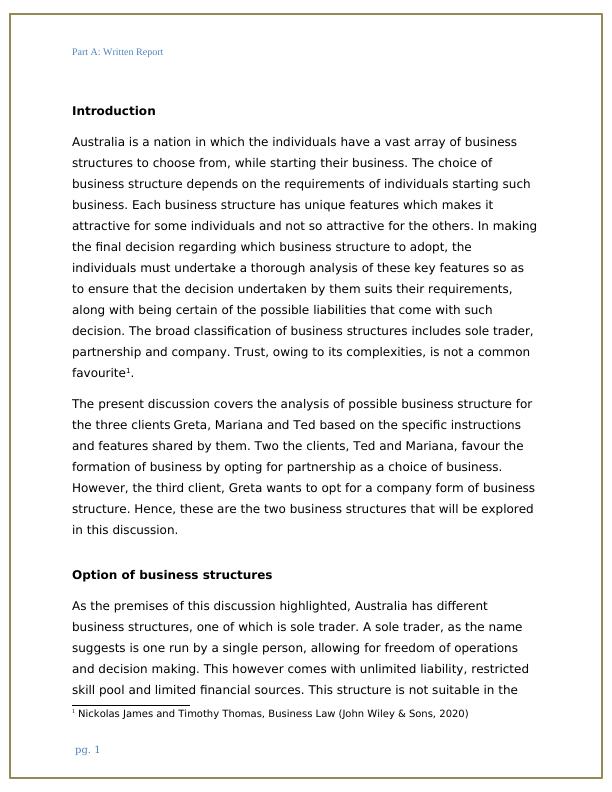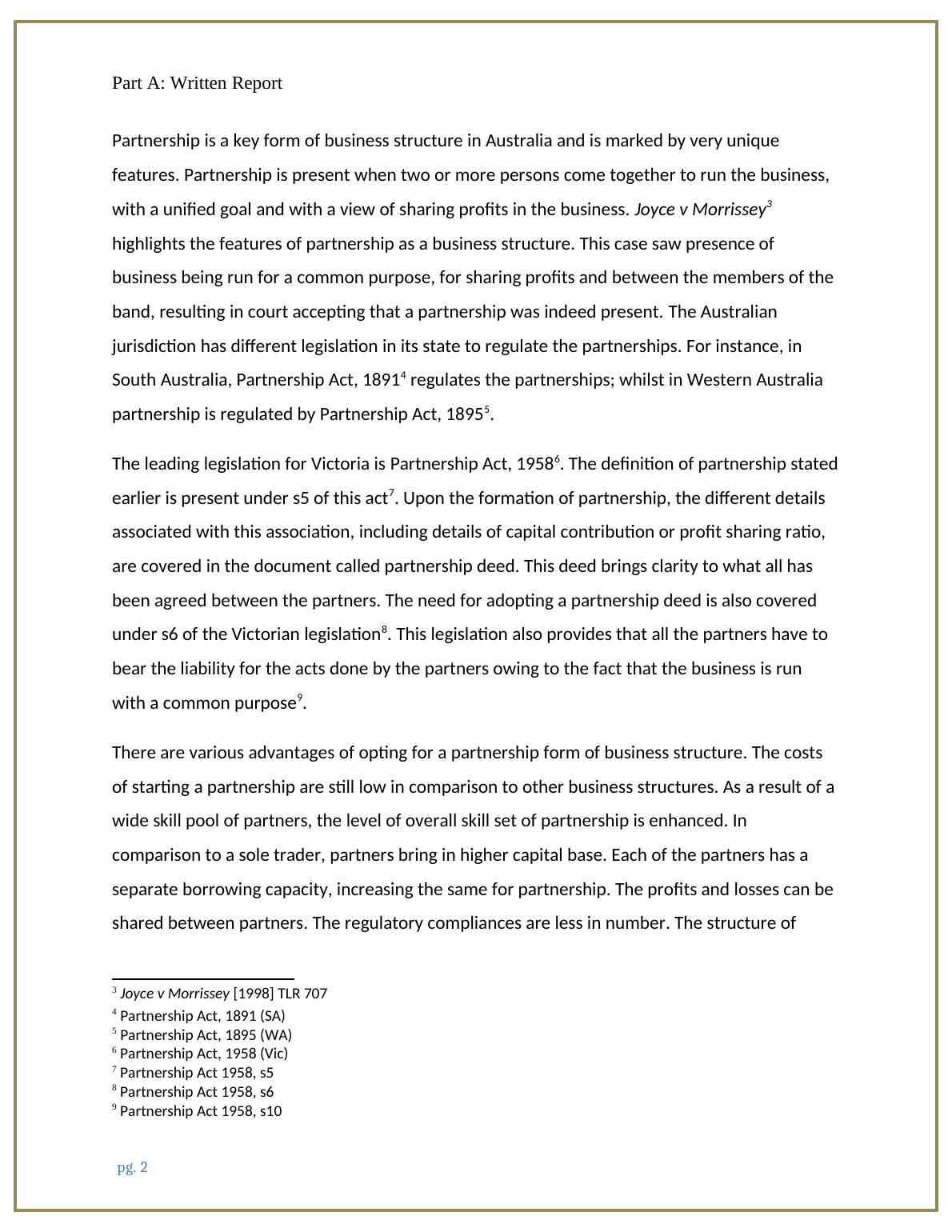Introduction Business Structures in Australia
Assignment 1 for LAWS20059 course in TERM 1, 2020. It is an individual assignment worth 40% of the overall assessment. The assignment requires a written report and a YouTube video. The due date for submission is 24 April 2020, 11:45 pm AEST. The referencing should be done according to the Australian Guide to Legal Citation (AGLC).
Added on 2022-07-28
About This Document
Introduction Business Structures in Australia
Assignment 1 for LAWS20059 course in TERM 1, 2020. It is an individual assignment worth 40% of the overall assessment. The assignment requires a written report and a YouTube video. The due date for submission is 24 April 2020, 11:45 pm AEST. The referencing should be done according to the Australian Guide to Legal Citation (AGLC).
Added on 2022-07-28
End of preview
Want to access all the pages? Upload your documents or become a member.



